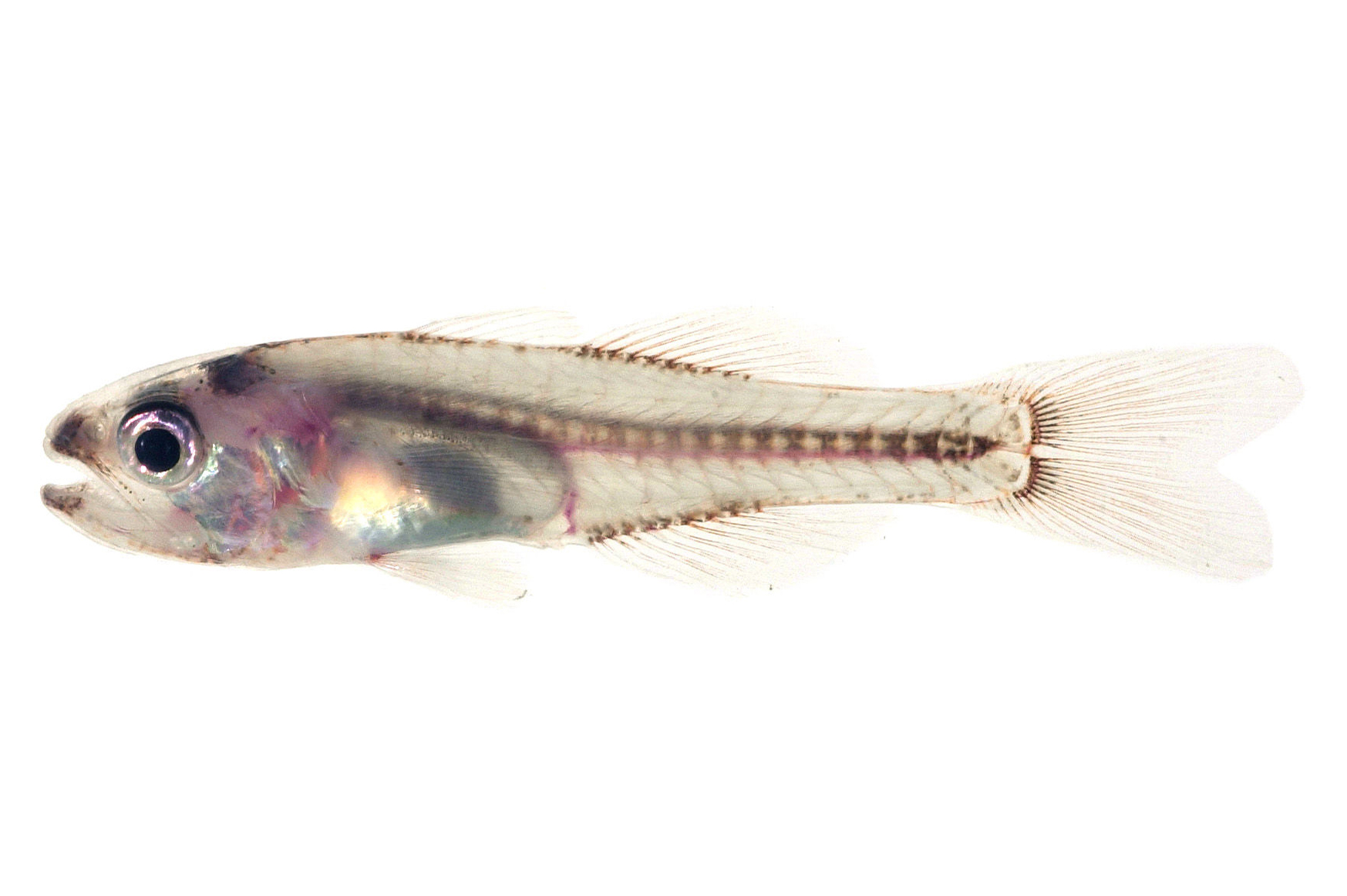- Classification
- ACTINOPTERYGII
- PERCIFORMES
- APOGONIDAE
- Gymnapogon
- urospilotus
Tailspot Cardinalfish, Gymnapogon urospilotus Lachner 1953

A Tailspot Cardinalfish, Gymnapogon urospilotus, from Mindoro, Philippines, USNM 379166. Source: Jeffrey T. Williams, Division of Fishes, Smithsonian Institution, United States National Museum. License: CC by Attribution-NonCommercial-ShareAlike
Summary:
A secretive semi-transparent cardinalfish with a distinctive dark B-shaped spot on the caudal-fin base.
Cite this page as:
Bray, D.J. 2019, Gymnapogon urospilotus in Fishes of Australia, accessed 27 Jun 2025, https://fishesofaustralia.net.au/home/species/1643
Tailspot Cardinalfish, Gymnapogon urospilotus Lachner 1953
More Info
|
Distribution |
Scott Reef, Western Australia, Ashmore and Cartier Islands (Timor Sea), the Great Barrier Reef, Queensland and reefs in the Coral Sea; also at Cocos (Keeling) Islands in the eastern Indian Ocean. Elsewhere the species occurs in the west-central Pacific. During the day, this nocturnal species shelters deep within the reef. |
|
Features |
Dorsal fin VI + I, 9; Anal fin II, 9-10; Pectoral fin 13-14; Pelvic fin I, 5; Caudal fin (branched rays) 8+7; Gill rakers (incl rudiments) 2+1+9. |
|
Biology |
The transparent larvae have large orange-red blotches on the tail, scattered melanophores on the head and pelvic fins, very long pelvic-fin rays with black tips and contrasting white bands, and limited inter-ray membranes. They also have a strongly serrate urohyal, however, the serrations disappear after settlement. Larvae settle onto the reef at 2-2.5 cm SL (Leis et al. 2015). |
|
Etymology |
The species is named urospilotus, in reference to the spots at the end of the caudal peduncle. |
|
Species Citation |
Gymnapogon urospilotus Lachner 1953, in Schultz et al. (eds), Bull. U. S. Natl Mus. 202(1): 494, fig. 83. Type locality: Kwajalein Atoll, northern Marshall Islands, in lagoon reef near south end of Ennylabegan Island. |
|
Author |
Bray, D.J. 2019 |
|
Resources |
Tailspot Cardinalfish, Gymnapogon urospilotus Lachner 1953
References
Allen, G.R. & Erdmann, M.V. 2012. Reef fishes of the East Indies. Perth : Tropical Reef Research 3 vols, 1260 pp.
Allen, G.R. & Smith-Vaniz, W.F. 1994. Fishes of Cocos (Keeling) Islands. Atoll Research Bulletin 412: 1-21
Lachner, E.A. 1953. Family Apogonidae : cardinal fishes. pp. 412-498 figs 69-84 pls 33-43 in Schultz, L.P., Herald, E.S., Lachner, E.A., Welander, A.D. & Woods, L.P. (eds). Fishes of the Marshall and Marianas Islands. Vol. 1. Families Asymmetrontidae through Siganidae. Bulletin of the United States National Museum 202(1): 1-685, figs 1-90, pls 1-74 https://doi.org/10.5479/si.03629236.202.1 open access
Leis, J.M., Meyer, O., Hay, A.C. & Gaither, M.R. 2015. A coral-reef fish with large, fast, conspicuous larvae, and small, cryptic adults (Teleostei: Apogonidae). Copeia 103(1): 78-86. DOI 10.1643/CG-14-119 Abstract
Mabuchi, K., Fraser, T.H., Song, H., Azuma, Y. & Nishida, M. 2014. Revision of the systematics of the cardinalfishes (Percomorpha: Apogonidae) based on molecular analyses and comparative reevaluation of morphological characters. Zootaxa 3846(2): 151–203.
Myers, R.F. 1999. Micronesian Reef Fishes. A comprehensive guide to the coral reef fishes of Micronesia. Guam : Coral Graphics vi 330 pp. 192 pls.
Randall, J.E. 2005. Reef and shore fishes of the South Pacific. New Caledonia to Tahiti and the Pitcairn Islands. Honolulu : University of Hawaii Press 707 pp.
Randall, J.E., Allen, G.R. & Steene, R. 1997. Fishes of the Great Barrier Reef and Coral Sea. Bathurst : Crawford House Press 557 pp. figs.


